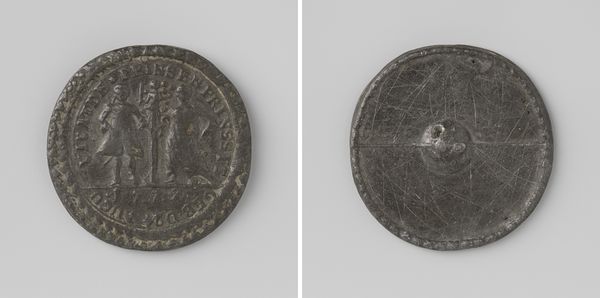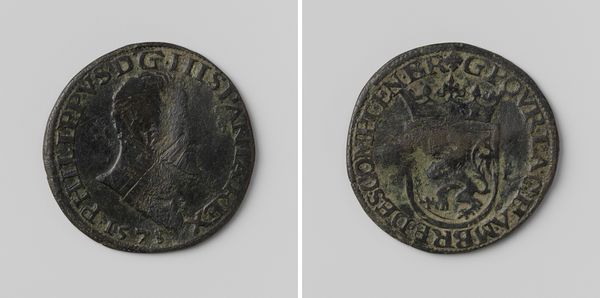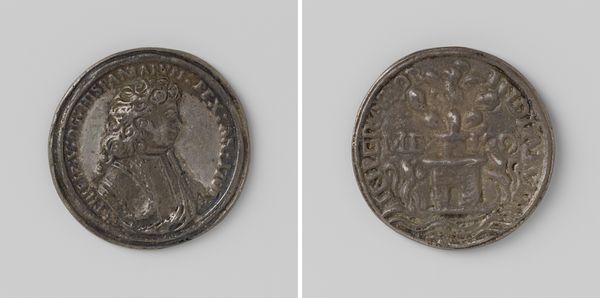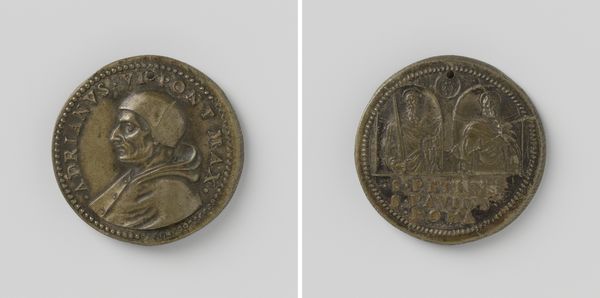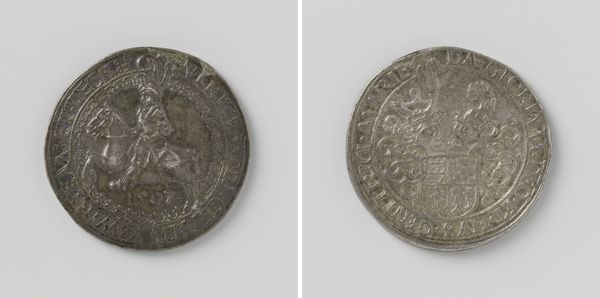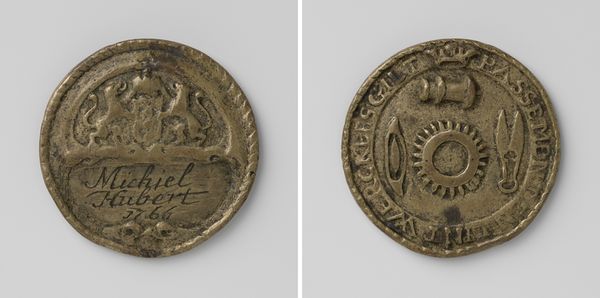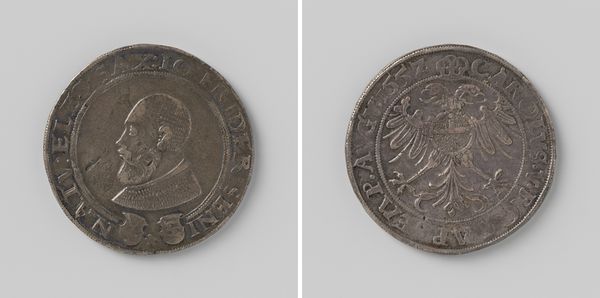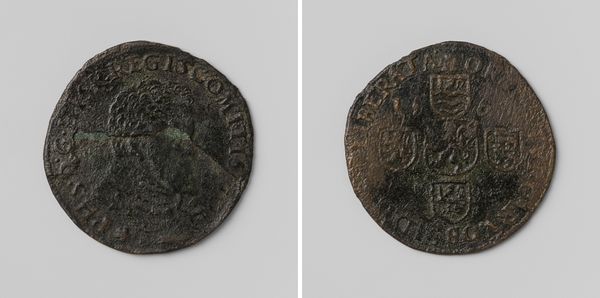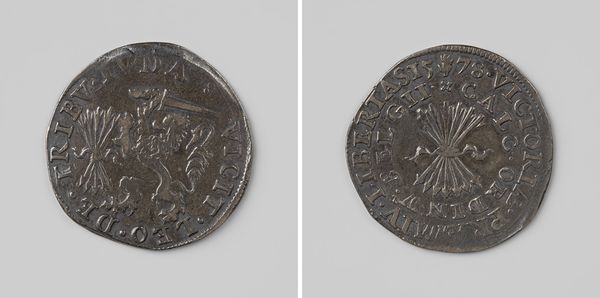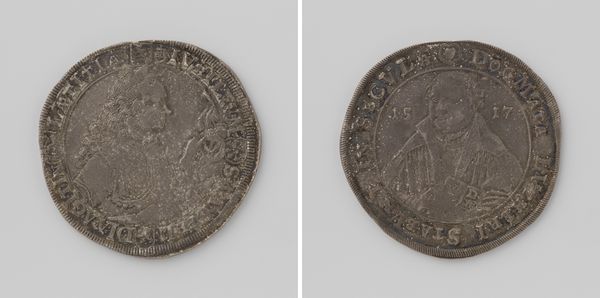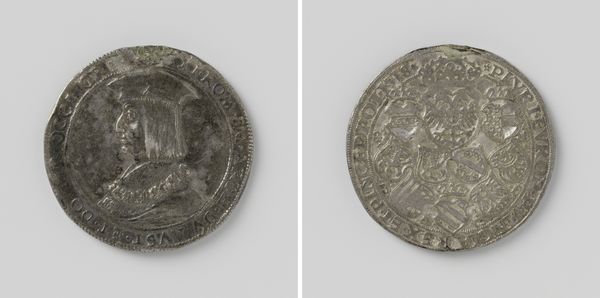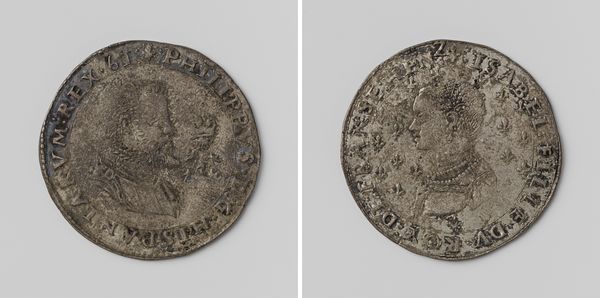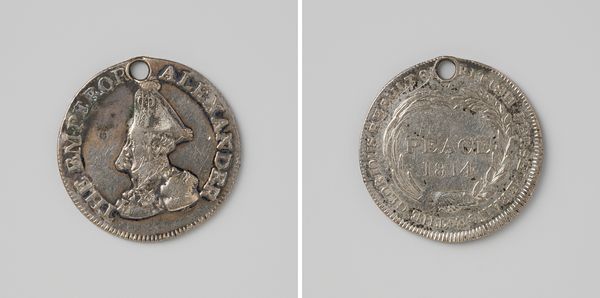
metal, relief, sculpture
#
portrait
#
medieval
#
metal
#
sculpture
#
relief
#
sculpture
#
italian-renaissance
#
statue
Dimensions: diameter 2.9 cm, weight 9.36 gr
Copyright: Rijks Museum: Open Domain
Curator: It's compelling how this small object holds such significant power—both as currency and as a portrait. Editor: My immediate thought is how skillfully the artist managed to achieve detail within such constrained dimensions and such durable materials, most likely metal. The surface shows some degradation, testament to time and use. Curator: Precisely. This relief is known as "Ercole I d'Este, hertog van Ferrara," dating back to 1497. Observe how it captures not just his likeness but also, through visual language, an echo of his authority. It's from the Italian Renaissance, a time that loved to allude to ancient virtues. Editor: The means of production interest me. Was this stamped? Or individually crafted? How many were made and who would have been able to obtain them? Considering the economics surrounding portraiture helps understand that having your own likeness replicated would speak volumes about economic status. Curator: Look closely at the equestrian imagery. Ercole atop the horse recalls classical military heroes—a clear effort to associate him with Roman ideals of leadership. The image on each side, with Ercole on horseback is a study in both power and perspective. The choice of profiles is significant, too. Editor: Profile portraits became fashionable across different mediums—perhaps related to ease of execution and replication or the constraints involved, in order to render the material into recognizable forms—demanding simplification but also standardization across court portraits. Curator: That is true, however profiles in profile create a symbolic distance, that prevents us to gaze directly at the leader and engage his person. Instead we are encouraged to respect from afar and regard this image of power, wealth, and political achievement. The image then does double-duty, solidifying his public persona even while facilitating trade. Editor: So we see the complex dance between symbolism, production, and the daily uses of materials within Renaissance life—a world both distant from, yet intimately connected to, our own. Curator: Exactly—a microcosm reflecting a whole society’s values and aspirations. I am thankful that visual symbol remains as relevant to understand identity.
Comments
No comments
Be the first to comment and join the conversation on the ultimate creative platform.
